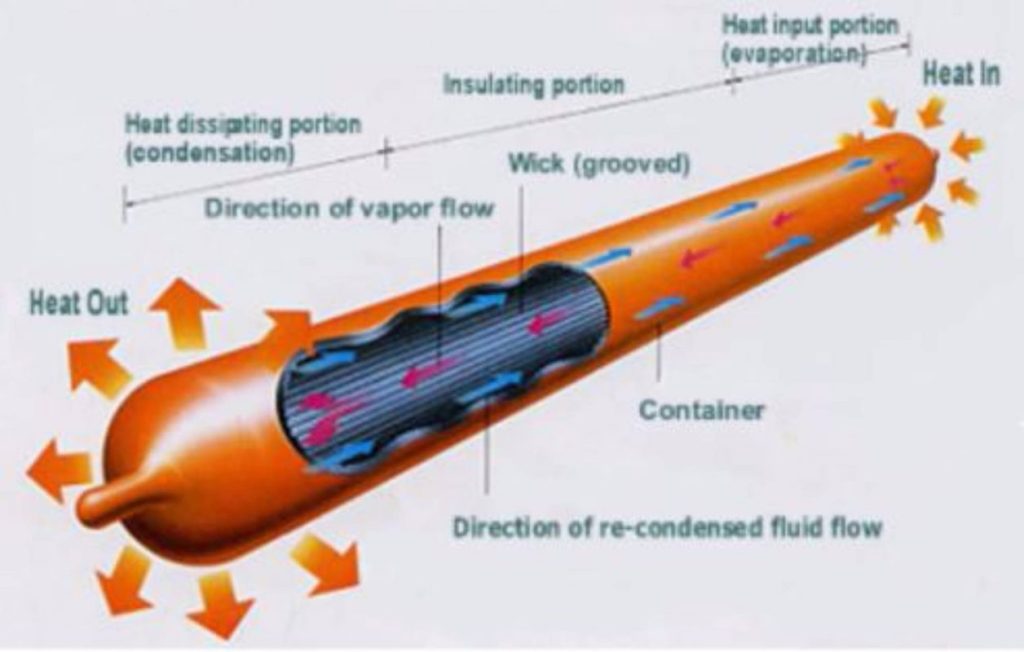
A heat pipe is a simple device that can quickly transfer heat from one point to another. They are often referred to as the “superconductors” of heat as they possess an extra ordinary heat transfer capacity and rate with almost no heat loss.
The idea of heat pipes was first suggested by R.S.Gaugler in 1942. However, it was not until 1962, when G.M.Grover invented it, that its remarkable properties were appreciated and serious development began.
It consists of a sealed aluminum or copper container whose inner surfaces have a capillary wicking material. A heat pipe is similar to a thermosyphon. It differs from a thermosyphon by virtue of its ability to transport heat against gravity by an evaporation-condensation cycle with the help of porous capillaries that form the wick. The wick provides the capillary driving force to return the condensate to the evaporator. The quality and type of wick usually determines the performance of the heat pipe, for this is the heart of the product. Different types of wicks are used depending on the application for which the heat pipe is being used.


